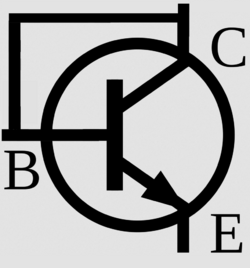Engineering:Diode-connected transistor
From HandWiki
A diode-connected transistor is a method of creating a two-terminal rectifying device (a diode) out of a three-terminal transistor. A characteristic of diode-connected transistors is that they are always in the saturation region for metal–oxide–semiconductor field-effect transistors (MOSFETs) and junction-gate field-effect transistors (JFETs), and in the active region for bipolar junction transistors (BJTs).
A diode-connected transistor is made by connecting
Diode-connected transistors are used in current mirrors to provide a voltage drop that tracks that of the other transistor as temperature changes.[2] They also have very low reverse leakage currents.[3]
References
- ↑ http://www.ti.com/lit/an/sboa058/sboa058.pdf [bare URL PDF]
- ↑ "Usage of a transistor configured as diode". http://electronics.stackexchange.com/questions/50633/transistor-configured-as-diode.
- ↑ "Electronic Device and Circuit Theory Electronics: Common Circuit Application(JFET Diode)". 17 March 2009. http://electronicscircuit1.blogspot.com/2009/03/common-circuit-applicationjfet-diode.html.
 |


